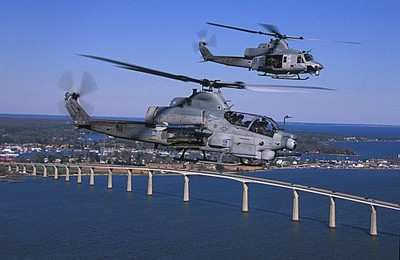Open Architecture Design Functions Across Fixed- And Rotary-Wing Aircraft
Northrop Grumman Corporation is incorporating the newest cockpit technology and open architecture design in both fixed- and rotary-wing platforms.

The cornerstones of Northrop Grumman's integrated, open system are mature and proven technology, as well as a partitioned software architecture that minimizes life cycle cost while enabling easy capability upgrades well into the future.
"By incorporating the latest open architecture technology into our mission equipment package, which is highly open and upgradable, we have achieved a system architecture that protects the government's investment over the long haul for multiple platforms," said Ike Song, vice president, Situational Awareness Systems, Northrop Grumman Electronic Systems. "Our avionics solutions continue to demonstrate superior performance and low life cycle costs compared with less robust architectures."
Northrop Grumman's digital cockpit solution features an integrated architecture that can be applied to multiple platforms, including AH-64D/E Apache, H-60L Black Hawk and CH-47D/F Chinook helicopters, through a single software package. Northrop Grumman utilizes model-based design for operational flight program software that is certifiable under the new DO-178C standards and that allows the pilot vehicle interface to be easily replicated on multiple platforms, simplifying aircrew training and the transition between multiple aircraft types. The Northrop Grumman Mission Equipment Package employs an FAA/EASA certified flight management system that is fully compliant with U.S. and European communications, navigation, surveillance/air traffic management standards.
Additionally, the avionics system is Future Airborne Capability Environment (FACE) compliant, enabling rapid capability insertion while reducing cost and risk for system integration and upgrades. Northrop Grumman provides full, unlimited government purpose rights to technical data and software, providing the customer with unprecedented flexibility while minimizing vendor lock and obsolescence issues. Vendor lock is also eliminated through the partitioned software architecture for the operational flight program.

At the heart of Northrop Grumman's Integrated Avionics System that powers cockpits are its dual mission computers. The next-generation FlightPro Gen III mission computers feature the newest computing technology in multiple partitioned, 8-core PowerPC-based processors. The FlightPro mission computer is a combat-proven, mature solution already installed in the UH-1Y Venom and AH-1Z Viper platforms (pictured) under the U.S. Marine Corps H-1 upgrade program. The Marine Corps plans to incorporate the FlightPro Gen III mission computer throughout its future production fleet.
Northrop Grumman's proposed design solution for the U.S. Army's H-60L Black Hawk digital cockpit upgrade has already been demonstrated in a flight test on a UH-60L helicopter, replicating the UH-60M pilot vehicle interface and providing a common training environment for the Army utility helicopter fleet.
Northrop Grumman's commitment to customer success is linked to superior performance, reliability, affordability and open architecture. This is evident in programs such as the Common Infrared Countermeasures program, the APR-39C(V)1 and APR-39D(V)2 programs, and investment in mission performance associated with the Rotorcraft Avionics Innovation Laboratory that clearly demonstrates analog/digital interoperability, integrated aircraft survivability equipment, and seamless connectivity and interface with current and future integrated cockpits.
 ANN's Daily Aero-Term (05.29.25): Terminal Radar Service Area
ANN's Daily Aero-Term (05.29.25): Terminal Radar Service Area ANN's Daily Aero-Term (05.30.25): Very High Frequency (VHF)
ANN's Daily Aero-Term (05.30.25): Very High Frequency (VHF) Aero-News: Quote of the Day (05.30.25)
Aero-News: Quote of the Day (05.30.25) Airborne 05.23.25: Global 8000, Qatar B747 Accepted, Aviation Merit Badge
Airborne 05.23.25: Global 8000, Qatar B747 Accepted, Aviation Merit Badge ANN's Daily Aero-Linx (05.30.25)
ANN's Daily Aero-Linx (05.30.25)



